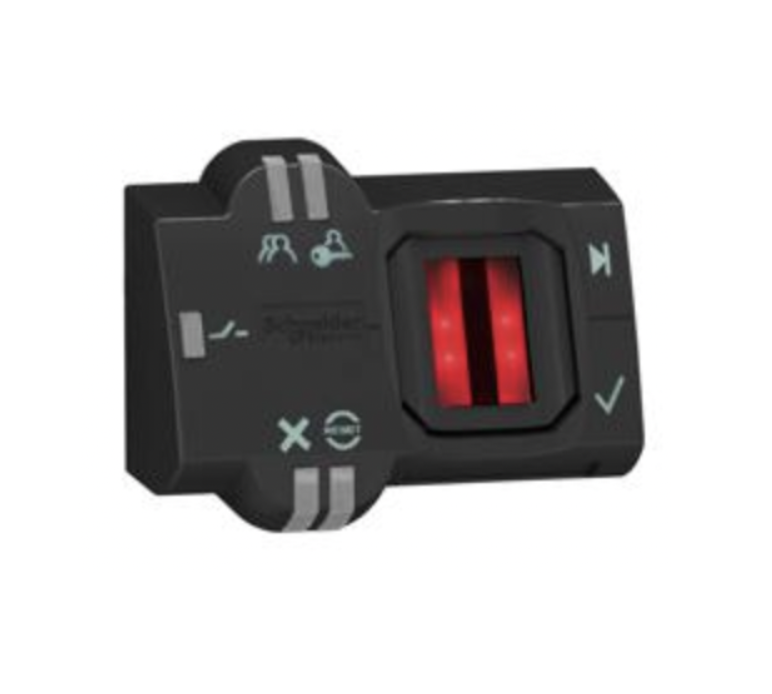Biometric Switches

RSP Supply carries a full line of biometric switches, accessories, and complete switch units for advanced industrial access control and safety applications. These switches provide a secure and efficient method of operator authentication, using fingerprint recognition to restrict access to authorized personnel only.
Pilot devices such as biometric switches are essential for machine control and process monitoring in industrial and commercial environments. They enable clear communication between operators and machinery, improving both safety and operational reliability. Typical pilot devices include visual indicators like signal towers and pilot lights, audio alerts such as buzzers and horns, and actuators including push buttons, toggle switches, and potentiometers. Access control systems ensure only authorized users can operate machinery or enter restricted areas. Modern biometric switches, such as Harmony Biometric Switches, offer two modes of operation: on/off and pulse mode for momentary action. They can store up to 200 fingerprints, perform authentication in under one second, and manage authorized users directly through the device or externally via an HMI or PC interface.
FAQs
Q: What is a biometric switch used for?
A biometric switch is used to control access to machines, panels, or restricted areas, allowing only authorized personnel to operate equipment through fingerprint or other biometric recognition.
Q: How do biometric switches improve industrial safety?
By ensuring that only trained or authorized users can start or modify equipment operation, biometric switches reduce the risk of accidental or unsafe machine use.
Q: Can biometric switches integrate with existing control systems?
Yes, most biometric switches can be integrated with existing PLC, HMI, or access control systems via standard communication protocols.
Q: How many users can a typical biometric switch store?
Many industrial biometric switches, such as the Harmony model, can store up to 200 fingerprints for user authentication.
Q: What are the advantages of biometric access over key or PIN-based systems?
Biometric access cannot be lost, stolen, or shared, making it a more secure and reliable solution for industrial and commercial access control.
Why Buy Biometric Switches from RSP Supply
RSP Supply offers high-quality biometric switches and accessories for secure, efficient access control in industrial automation. Our products ship quickly and are backed by expert support to help you implement reliable safety and control solutions.

